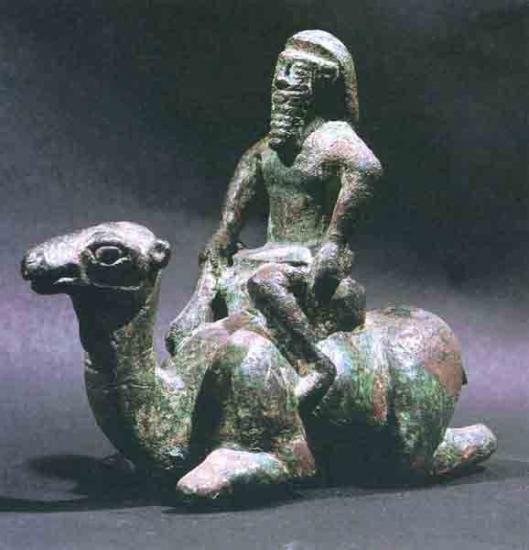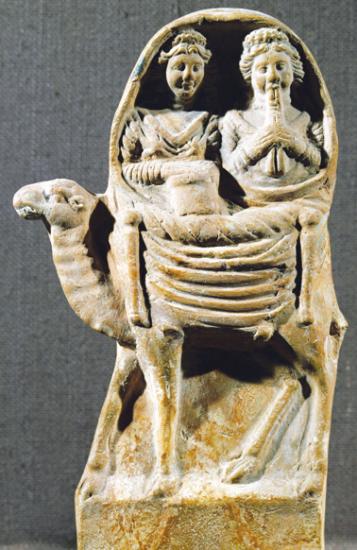Noah Wiener
Source - http://www.biblicalarchaeology.org/daily/ancient-cultures/daily-life-and-practice/camel-domestication-history-challenges-biblical-narrative/

“And for her [Sarai] sake he [Pharaoh] dealt well with Abram; and he had sheep, oxen, male donkeys, male and female slaves, female donkeys, and camels.” – Genesis 12:16
Camels play a major role in the Biblical narrative of the patriarchs; the animals are mentioned over 20 times in Genesis alone. However, a recent publication by Tel Aviv University (TAU) archaeologists Erez Ben-Yosef and Lidar Sapir-Hen suggests that camels were not domesticated in Israel until the end of the 10th century B.C.E. This would place Israel’s first domesticated dromedaries during the period of the United Monarchy, centuries after the Genesis narratives. An American Friends of Tel Aviv University news releasesuggests that “this anachronism is direct proof that the text was compiled well after the events it describes.”
Camels in the Ancient Near East
The September/October 2002 issue of Archaeology Odyssey includes an “Ancient Life” article that describes the importance and history of camel domestication in the ancient world:
Domesticated camels appeared in Mesopotamia by the middle of the second millennium B.C. The dromedary (a single-humped camel) was originally domesticated in southeastern Arabia, perhaps as early as the third millennium B.C. Around the same time, the Bactrian (double-humped) camel, which was mistakenly thought to be native to Bactria, in northern Afghanistan, was being domesticated in eastern Persia. The Sumerian word for the Bactrian camel literally means “wild bull from the foreign mountains.”
Once domesticated, camels greatly facilitated travel over the rough, arid terrain of the Near East and North Africa. Carrying up to 1,000 pounds on their backs, camels can walk some 25 to 30 miles in a day and go for weeks without drinking water. A thick lining in their mouths enables them to eat almost anything digestible, even thorny bushes—and a special, nearly transparent eyelid allows them to see while protecting their eyes from blowing sand. Camels also provide their owners with milk (females can produce more than a gallon a day for up to 18 months after giving birth) and fuel (dried dung).

Using such perfectly adapted creatures, desert peoples carried out lucrative trade in frankincense, myrrh, saffron and cinnamon—a commerce completely dependent on camel caravans traveling through Arabia to the Mediterranean coast.
Camels were also important beasts of war. The fifth-century B.C. Greek historian Herodotus recounts how camels played a decisive role in the Persian Achaemenids’ victory over the Lydians of Anatolia in 546 B.C.: “The reason for confronting the Lydian cavalry with camels was the instinctive fear which they inspire in horses. No horse can endure the sight or smell of a camel. This is the fact upon which the stratagem was based, and its object was to render useless Croesus’ cavalry, the very arm in which the Lydians expected to distinguish themselves. The ruse succeeded, for when the battle began, the horses turned tail the moment they smelt and saw the camels—and Croesus’ chief ground of confidence was cut from under him” (The Histories2.80).
Camels in Israel
For Erez Ben-Yosef and Lidar Sapir-Hen examined evidence from copper production sites in the southern Levant. Radiocarbon dates suggest that domesticated camel bones in the Aravah Valley—the oldest known domesticated camel bones in the region—date to the late 10th century B.C.E. or later, corresponding with changes in smelting practices. The researchers believe that Egyptians revised smelting operations while importing domesticated camels from the Arabian Peninsula.